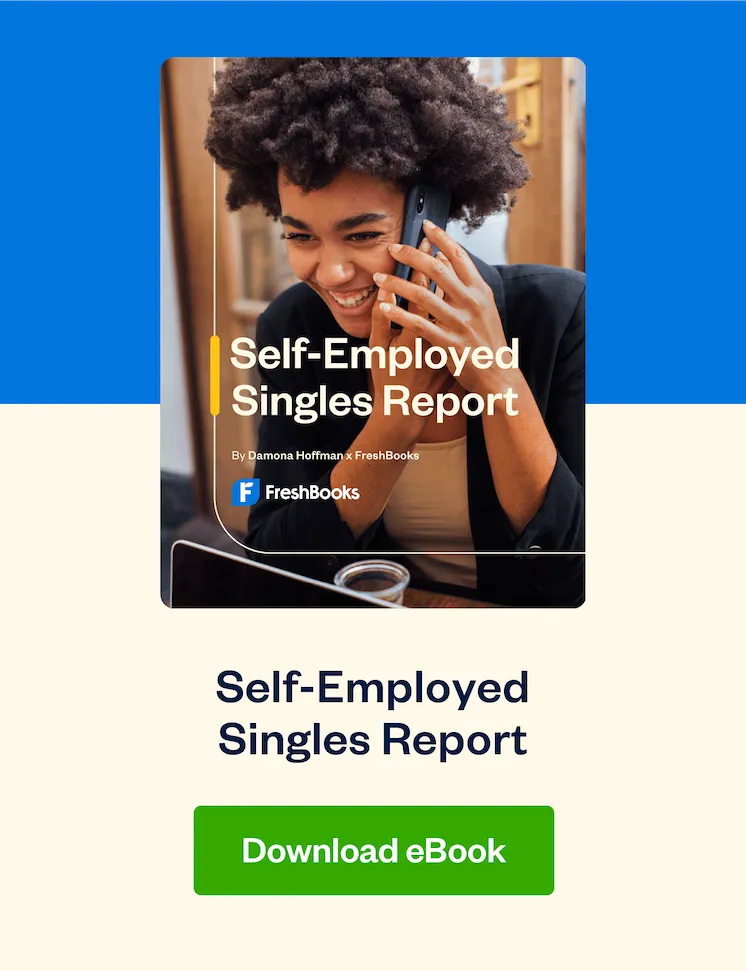Small Business Administration (SBA) loans can be a lifeline when you need funding. But what exactly are the SBA loan requirements? And does your business even qualify?

As a small business owner, finding capital to grow can be hugely challenging. When bootstrapping or self-funding is no longer an option, the next logical choice is to get a small business loan. But it’s no easy feat: Banks require loads of equity (cash), which you may not have. Even if you have the equity, the process can take so long that by the time you have access to the funds, it’s too late.
Small Business Administration (SBA) loans are an attractive alternative and among the most popular small business loans in the United States. They have low-interest rates, predictable monthly payments, and a variety of loan types to help small businesses. For instance, in 2021, SBA microloans valued at $71.8 million helped 4,400 U.S. small businesses.
However, there are specific SBA loan requirements you need to meet that can make the process seem complicated and daunting.
But it doesn’t have to be.
To help you along, we’ve created this short guide that covers everything you need to know to qualify for these small business loans, including:
- The types of SBA loan programs
- The loan requirements you need to meet
- How to apply for an SBA loan
- How to improve your chances of getting approved
Table of Contents
What Types of Loan Programs Does the SBA Provide?
SBA loans are simply small business loans partially guaranteed by the Small Business Administration. Instead of offering these business loans, the SBA partners with lenders (usually banks) who provide them. The partial guarantee the SBA provides makes these loans attractive to lenders.
The SBA currently offers borrowers 3 types of loan programs:
1. SBA 7(a) Loans
This is the most common SBA loan program for small businesses that includes help for those needing special assistance. There are various types, including Standard 7(a), 7(a) Small Loan, and SBA Express. They’re ideal for business purchases involving real estate. They can also be used for working capital, refinancing debt, and buying business fixtures and supplies. The maximum loan amount is $5 million.
2. SBA 504 Loans
SBA 504 loans are long-term, fixed-rate loans of up to $5 million used for buying fixed assets. You can access these SBA loans through Certified Development Companies (CDCs). CDCs are SBA non-profit partners who promote economic development in the community.
3. SBA Microloans
Microloans are the SBA’s smallest loan program businesses can use to get up to $50,000 worth of funding. Administration of these SBA loans is through designated intermediary lenders (non-profits with experience in lending).
Does Your Business Qualify for an SBA Loan?
There are general SBA loan requirements you need to meet, as well as lender and loan-specific requirements. Here’s a breakdown.
General SBA Loan Requirements
The following loan requirements apply regardless of lender and loan type:
1. Business Details
Your business must be a for-profit business, registered, and operate legally. Non-profits generally do not qualify for an SBA business loan.
You also need to operate in an eligible industry. Exclusions include businesses engaged in lending and lobbying, life insurance companies, and speculative companies (e.g., gambling concerns).
2. Location
Your business needs to be located in the U.S.
3. Investment
You need to have invested equity (time or money) into the business.
4. Financing
You need to show that you could not get other financing (e.g., a traditional loan from a bank). You must also demonstrate that you need the funds and what you will use them for.
5. Business Size
Your business must meet the SBA’s small business definition. Size is defined by the number of employees, average annual receipts, or net worth. It also varies by industry. Use the SBA’s size standard tool to determine if your business meets size requirements.
6. Debt
You can’t have any outstanding debt with other government organizations. You also need to demonstrate an ability to repay the loan based on cash flow projections. While good credit will give you an edge over others who apply, according to the SBA: “Even those with bad credit may qualify for startup funding.”
Lender or Underwriter Loan Requirements
Different lenders will also have their own criteria. But most will focus on these core areas:
1. Credit Score
Lenders look at credit scores to determine your risk and lending interest rates.
- Personal credit score. This score provides a window into how you manage your finances. Higher scores reassure lenders you can repay the loan. While the SBA doesn’t set a minimum credit score, lenders usually have their own minimums. It’s generally accepted that small businesses should aim for scores in the mid to high 600s—and beyond.
- Business credit score. Certain SBA loans (e.g., 7(a) loans) also require a business credit score. The SBA uses the FICO Small Business Scoring Service to pre-screen borrowers and obtain a score. The score considers personal and business credit data and ranges from 0–300. The SBA’s acceptable credit score is around 150. For lenders, it’s higher at 160. Familiarize yourself with your specific lender’s minimum requirements.
2. Collateral
Lenders need collateral to secure a loan, such as equipment, inventory, cash, or commercial real estate.
3. Time in Business
The longer you’re in business, the higher the chances of getting approved for an SBA loan because it indicates you’re more likely to succeed and repay the loan.
Lenders typically prefer companies operating for 2 to 3 years over those in business for less than a year. That said, lenders do still provide SBA loans to newer businesses. Be sure to check with your specific lender.
4. Business Finances and Business Plan
Lenders favor businesses with solid financials. This means having minimal debt and substantial revenue, profit, and cash flow projections.
Some lenders will also expect you to provide a business plan and detail what the funds will be used for and how you plan to pay them back.
5. Background Information
Lenders require background information on you, such as your citizenship status and whether you have a criminal record.
SBA Loan Requirements by Loan Type
In addition to the general SBA and lender loan requirements, which are relatively standard across loan types, there are also more specific requirements.
7(a) Loans
- You require a suitable business credit score of around 160
- For SBA CAPLines of credit (a 7(a) loan used for short-term working capital needs), you must demonstrate a pattern of seasonal activity
- You need collateral for loans of $350,000 or more
- You will have to complete an SBA Form 1919 and SBA Form 1920
504 Loans
- Your business net worth must be less than $15 million
- For 2 years before applying for a 504 loan, your average net income must be less than $5 million after federal income tax
- Any real estate you buy must be 51% owner-occupied
- The purchase must help grow your business or create jobs
- Expect to have to make a 10–20% down payment
Microloans
- You can’t use this SBA loan to buy real estate or finance existing debt
- Certain training and development programs may be part of the loan terms
How Do You Apply for an SBA Loan?
Step 1: Check Eligibility
Review the general SBA loan requirements and lender requirements. Here’s a recap:
General SBA Loan Requirements: Do I Meet the Following Loan Requirements?
- Am I a for-profit business?
- Do I meet the SBA’s definition of a small business?
- Am I located in the U.S.?
- Have I invested reasonable equity into the business?
- Have I exhausted other financing options?
- Can I demonstrate that I need this loan?
- Can I show that I will use this loan for business purposes?
- Do I have no outstanding debt with other government organizations?
Underwriting Requirements: Am I Likely to Meet Lender Requirements?
While requirements and exact loan terms may differ slightly between lenders, most will look at the following:
- Credit score: How good is it? Aim for mid-to-high 600s and beyond.
- Collateral: What collateral can I offer? Examples included inventory and cash.
- Time in business: How long have I been operating? A couple of years is usually preferred, but you can still get a loan if you’ve just started.
- Finances: Do I have minimal debt? Does my business show strong revenue and cash flow? Am I clear on how funds will be used? Do I have a business plan?
- Background information: Do I have a criminal record? Having one won’t disqualify you, but expect more scrutiny from a lender.
Step 2: Choose Your SBA Loan Based on Your Financial Needs
Ask yourself the following questions:
- Why do I need a loan? Is it to get more working capital, buy real estate, or purchase a major asset like equipment? If you operate a seasonal business like a landscaping business, you may need a 7(a) loan. If you need major fixed assets, a 504 loan may be ideal.
- How much money do I need? For a smaller loan amount ($50,000), use a microloan. Choose an SBA 7(a) or 504 loan for a larger loan amount.
Step 3: Find a Suitable SBA Lender
Find a suitable lender using the SBA’s match tool. Here’s how it works:
- Describe your needs by answering a few questions
- Several SBA lenders will contact you in a few days
- Compare each lender in terms of fees and terms
- Submit your application (discussed next)
Note: Research and chat with several lenders until you’ve found the right match for your business.
Step 4: Prepare Your Loan Application
The SBA forms and documents you need to provide will vary by lender and loan type, but these are the common ones:
- Forms to fill out
- SBA Form 1919: Borrower Information Form
- SBA Form 912: Statement of Personal History
- SBA Form 413: Personal Financial Statement
- SBA Form 148: Unconditional Guarantee (for small business owners with 20% or more ownership)
- SBA Form 148L: Limited Guarantee (for business owners with less than 20% ownership)
- Business financial statements (current and projected)
- Income statement
- Profit and loss statement
- Cash flow statement
- Balance sheet
- Business legal documents
- Articles of incorporation
- Commercial lease
- Franchise agreement
- Business certificate or license
- Personal and business tax returns (1–3 years)
- Personal and business bank account statements
- Business overview
- A summary of what you do, your business structure, and the assets you own/need to run your business
- Business plan
- Collateral schedule
- Business debt schedule (if any)
- Records of prior loan applications
- Business lease
- Business owner resume
Pro tip: Get a mentor or a friend qualified to review your application to check it and help identify missing documents and weak spots.
Step 5: Submit Your Loan Application
Submit your application to the chosen lender, who will send it to the SBA to review. This entire process can take 30 to 90 days. Once approved, you’ll receive funds in the designated bank account included in the application.
How to Set Yourself up for Success When Applying for an SBA Loan
Want your application to stand out from a sea of competitors? Here are 5 steps to follow to highlight your business in the best way possible.
1. Keep an Organized Financial Record
Your lender will go over your financials very thoroughly. Keeping a detailed and organized financial record will give you an edge over others who apply because you’ll:
- Have a solid understanding of your business finances and how much financing you need.
- Be able to quickly pull these records and give them to SBA lenders on time without having to scramble.
- Come across as more organized to the lender. If a lender has to wait for this info, you may seem unprepared, which could be a potential red flag for them.
To help keep an organized financial record, consider using cloud accounting software. The right software will help you:
- Track expenses so you know at a glance what you’re spending
- Prepare for tax season thanks to easy to assign tax-friendly business categories
- Track income received from invoices paid
- Create important financial reports like your balance sheet, profit and loss statement, and cash flow statements
Tip: If you have an accountant, you can also give them access to manage these reports for you.
2. Improve Your Cash Flow
Your cash flow is the money flowing in and out of your business. It’s one of the leading indicators that tells lenders whether you can repay a loan.
It helps lenders answer an important question: Do you have enough cash flowing in over the short term to cover existing debts, wages, and other expenses?
You can improve your cash flow by:
- Increasing your revenue. For example, sell more products or services, increase your prices, or improve the frequency of customer purchases.
- Lowering your expenses. Some expenses are fixed, but you can cut back on variable expenses like subscriptions, entertainment, and travel.
- Getting invoices paid faster. Set clear payment terms and send payment reminders.
3. Create a Strong Business Plan
A business plan is a formal document that covers all the details needed to start your business. This includes your financial goals, business structure, services, and marketing plan.
A strong business plan shows lenders you have business acumen, helps sell your idea, and demonstrates you will make money and be able to repay the loan.
Here’s a business plan template you can use to get started. You can also get free help through your local Small Business Development Center (SBDC).
4. Boost Your Credit Score
Your credit history tells the SBA and lenders how well you handle personal and business credit. Your credit score measures your ability to handle credit—the higher your credit score, the higher your chances of getting approved for a loan.
So, check your score to see where you stand and make improvements where you can (remember, you generally want a score in the mid-to-high 600s).
To boost your credit score, do the following:
- If your personal and business credit history is sparse, start building it. Open a couple of business credit cards, use the credit card during the month, and pay it off on time.
- Pay all your accounts on time, including subscriptions, car insurance payments, and your phone.
- Review credit reports and fix the problems on those reports.
5. Know What Collateral You Can Offer
Collateral makes the lender feel more comfortable giving you the loan. It reassures them they will be compensated even if you can’t meet the loan payments.
Make sure you know what collateral you can offer up to the lender ahead of time, whether cash, real estate, stocks, or inventory.
Improve Your Chances of Getting Approved for an SBA Loan Today
SBA loans may be an attractive alternative to securing funding compared to traditional loans from banks. But the loan requirements and approval process can feel intimidating.
The good news? It doesn’t have to be as long if you do a little homework:
- Spend time understanding the SBA loan programs available to you
- Familiarize yourself with the SBA, lender, and loan-specific requirements
- Get acquainted with the SBA loan application process
- Improve your chances of loan approval by better organizing your finances, improving your cash flow, and boosting your credit score
Here’s to feeling less intimidated when applying for an SBA loan and significantly improving your chances of getting the right SBA loan for your business!

Written by Nick Darlington, Freelance Contributor
Posted on August 16, 2022

 How to Get a Small Business Loan in 7 Easy Steps
How to Get a Small Business Loan in 7 Easy Steps Strategies for Securing a Small Business Loan in the U.S.
Strategies for Securing a Small Business Loan in the U.S. What Is Cash Flow? Almost Everything You Need to Know
What Is Cash Flow? Almost Everything You Need to Know






